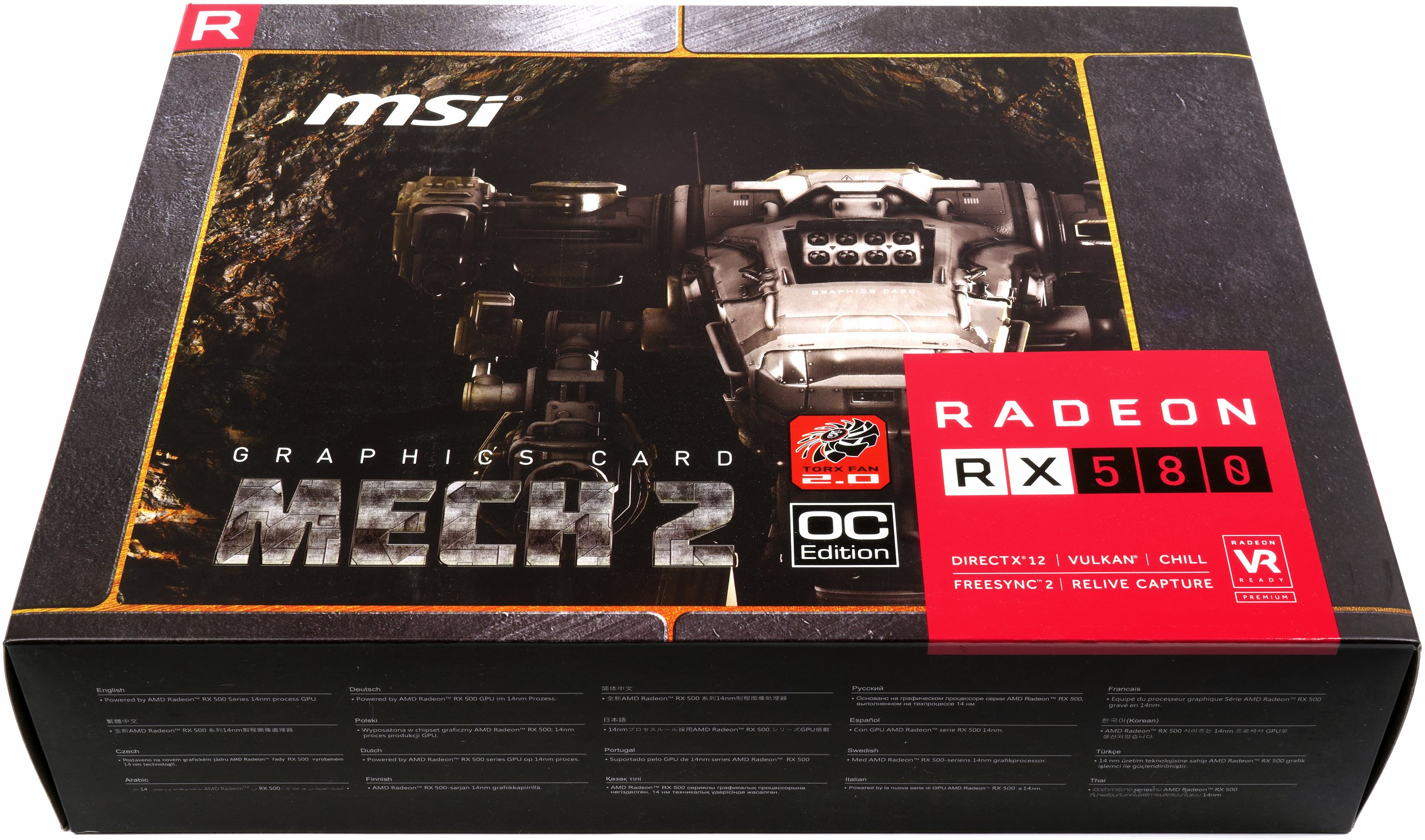 Take a chip that isn't quite as baptismal and think about which new product line you can establish and what added value you could generate for the end customer. The latter, of course, first of all from the point of view of marketing, because you have to establish the new product line somehow on the market.
Take a chip that isn't quite as baptismal and think about which new product line you can establish and what added value you could generate for the end customer. The latter, of course, first of all from the point of view of marketing, because you have to establish the new product line somehow on the market.
The older Gaming-X models are no longer available and obviously also EOL. The own Armor series is virtually the entry-level card in this segment and not really image-rich. With the new MSI Radeon RX 580 Mech 2 8GB, the manufacturer obviously wants to score points with the gaming audience, fill the gap and get the big club out here and for it (again). You have to set them apart from everyone else. Given.
No, I don't really want to spoil anything yet, but, the title of the article is already going in the intended direction. The GPU is not a real new development, but only the continuation of what AMD started with "Ellesmere" and Polaris 10 two years ago. Since our launch article "AMD Radeon RX 480 in Test: Can Polaris Counter Against Pascal?" already contains all the important theoretical basics and deeper information about the architecture, there are no re-buttoned placeholders.
Unboxing, optics and haptics
Weighing only 849 grams, this card isn't quite as light as some other RX 580s, but it's also not overweight, which suggests a reasonably sized cooler. Also in the measures, the map is rather upper average. It has a mounting length of 27.4 cm (outer surface slot panel until the end of the radiator cover), making it an average length yread. However, with a height of 12.5 cm (from the top of the motherboard slot to the top edge of the upper heatpipe), it is relatively high. At 3.7 cm, the installation depth is exactly where you would expect it for a dual slot card.
The two Torx 2.0 fans, each with a rotor blade diameter of 9.5 cm, sit in an opening with a diameter of 10 cm. A total of 14 rotor blades per fan, with their special shape, provide above all a strong throughput and less for turbulence; they produce a little more static pressure. Whether and how loud the whole thing will then, we will see in a while.
The backplate is almost a must at MSI. Since you also do not use the famous sandwich frame at the top, the backplate has to be stabilized. It can't cool down, which is a little unfortunate. For this, it carries with approx. 0.5 cm still slightly to the back and you have to be careful that the rear hand does not collide with overwide CPU coolers in the Mini-ITX setup.
It is already clear at the bottom of the card that MSI is once again relying on the horizontally arranged slats for the AMD cards. The advantage is that the heated exhaust air is not pressed against the sidewall and motherboard, but can sometimes even be transported directly from the housing. We also see the three 6 mm heatapipes made of nickel-plated composite material, two of which can also be seen around the top of the map.
The top clearly shows that MSI somehow tries to stay true to the design line. In addition, the single 8-pin power supply connection, which was rotated by 180°, is again positioned at the end of the board. An illuminated LED lettering has not been dispensed with. It does not seem without RGB
The open end of the card is used for exhaust air outlet, and at least the radiator cover is slightly over.
The slot panel has five ports. Two VR-compatible HDMI 2.0 ports and two DisplayPorts 1.4 are available to the user. The DVI-D connector is a logical addition, which is mainly aimed at up-and-comers with older monitors. However, since the slot visor is also used for air outlet, its presence is rather counterproductive from a cooling point of view.
Key technical data
Finally, let's take a first look at the purely technical data. The value displayed as the maximum clock is not only a wishful thinking, which should be easily achieved within the set power and temperature limit. But let us be surprised at what goes beyond that.
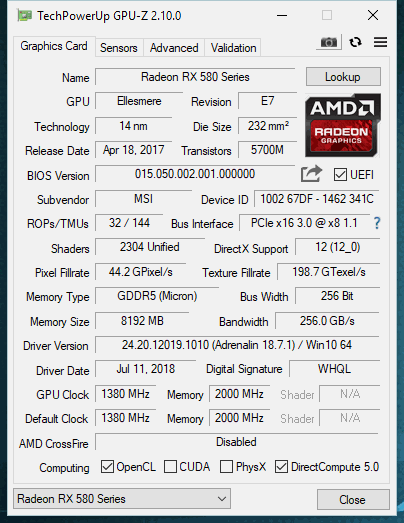
Compared to the relevant (reference cards), this looks like this:
| Nvidia Geforce GTX 970 |
Nvidia Geforce GTX 1060 |
Amd Radeon RX 480 |
Msi RX 580 Mech 2 |
Sapphire RX 580 Nitro+ |
Amd Radeon R9 390X |
|
|---|---|---|---|---|---|---|
| Shader Units |
1664 | 1280 | 2304 | 2304 | 2304 | 2816 |
| Rops | 56 | 48 | 32 | 32 |
32 |
64 |
| Gpu | GM204 | GP106 | Ellesmere | Ellesmere ("Polaris 20") |
Ellesmere ("Polaris 20") |
Hawaii/ Grenada |
| Transistors | 5 billion | 4.4 billion | 5.7 billion |
5.7 billion | 5.7 billion | 6.2 billion |
| Memory | 4 GB | 6 GB | 8 GB | 8 GB | 8 GB | 8 GB |
| Interface | 256 bit | 192 bit | 256 bit | 256 bit | 256 bit | 512 bit |
| GPU clock Mhz |
1051+ | 1506+ | 1266 |
1380 |
1411 |
1050 |
| Memory clock Mhz |
1750 | 1750 | 2000 |
2000 |
2000 |
1500 |
Test system and measurement methods
The new test system and the methodology have already been described in great detail in the basic article "How We Test Graphics Cards" (English: "How We Test Graphics Cards") and therefore, for the sake of simplicity, we now only refer to this detailed Description. So if you want to read everything again, you are welcome to do so. However, we have again improved CPU and cooling to largely exclude possible CPU bottlenecks for this fast card.
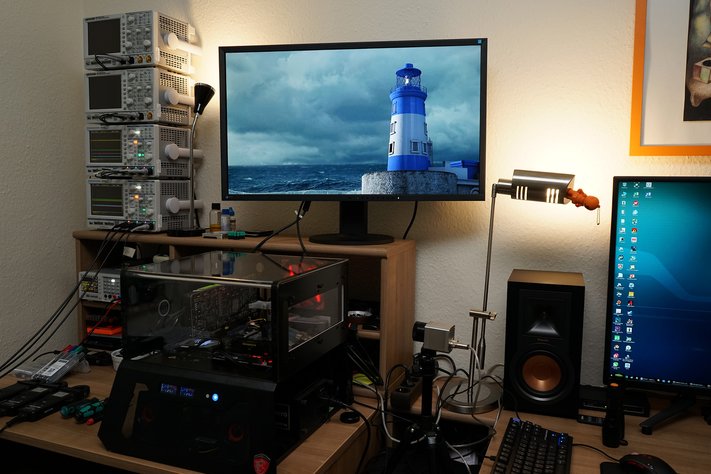
If you are interested, the summary in table form quickly provides a brief overview:
| Test systems and measuring rooms | |
|---|---|
| Hardware: |
Intel Core i7-6900K -4.3GHz MSI X99S XPower Gaming Titanium G.Skill TridentZ DDR4 3600 1x 1 TByte Toshiba OCZ RD400 (M.2, System SSD) 2x 960 GByte Toshiba OCZ TR150 (Storage, Images) Be Quiet Dark Power Pro 11, 850-watt power supply |
| Cooling: |
Alphacool Ice Block XPX 5x Be Quiet! Silent Wings 3 PWM (Closed Case Simulation) Thermal Grizzly Kryonaut (for cooler change) |
| Housing: |
Lian Li PC-T70 with expansion kit and modifications Modes: Open Benchtable, Closed Case |
| Monitor: | Eizo EV3237-BK |
| Power consumption: |
non-contact DC measurement on the PCIe slot (Riser-Card) non-contact DC measurement on the external PCIe power supply Direct voltage measurement on the respective feeders and on the power supply 2x Rohde & Schwarz HMO 3054, 500 MHz multi-channel oscillograph with memory function 4x Rohde & Schwarz HZO50, current togor adapter (1 mA to 30 A, 100 KHz, DC) 4x Rohde & Schwarz HZ355, touch divider (10:1, 500 MHz) 1x Rohde & Schwarz HMC 8012, digital multimeter with storage function |
| Thermography: |
Optris PI640, infrared camera PI Connect evaluation software with profiles |
| Acoustics: |
NTI Audio M2211 (with calibration file) Steinberg UR12 (with phantom power for the microphones) Creative X7, Smaart v.7 own low-reflection measuring room, 3.5 x 1.8 x 2.2 m (LxTxH) Axial measurements, perpendicular to the center of the sound source(s), measuring distance 50 cm Noise in dBA (Slow) as RTA measurement Frequency spectrum as a graph |
| Operating system | Windows 10 Pro (1709, all updates), driver as of Jul 31, 2018 |
MSI Radeon RX 580 Mech 2 8G OC, 8GB GDDR5, DVI, 2x HDMI, 2x DP
- 1 - Einführung, Unboxing und Daten
- 2 - Platinenlayout und Spannungsversorgung
- 3 - Gaming-Performance 1920 x 1080 Pixel (Full-HD)
- 4 - Gaming-Performance 2560 x 1440 Pixel (WQHD)
- 5 - Leistungsaufnahme im Detail
- 6 - Temperaturen, Taktraten und Wärmebildanalyse
- 7 - Kühlerdetails und Geräuschentwicklung
- 8 - Zusammenfassung und Fazit















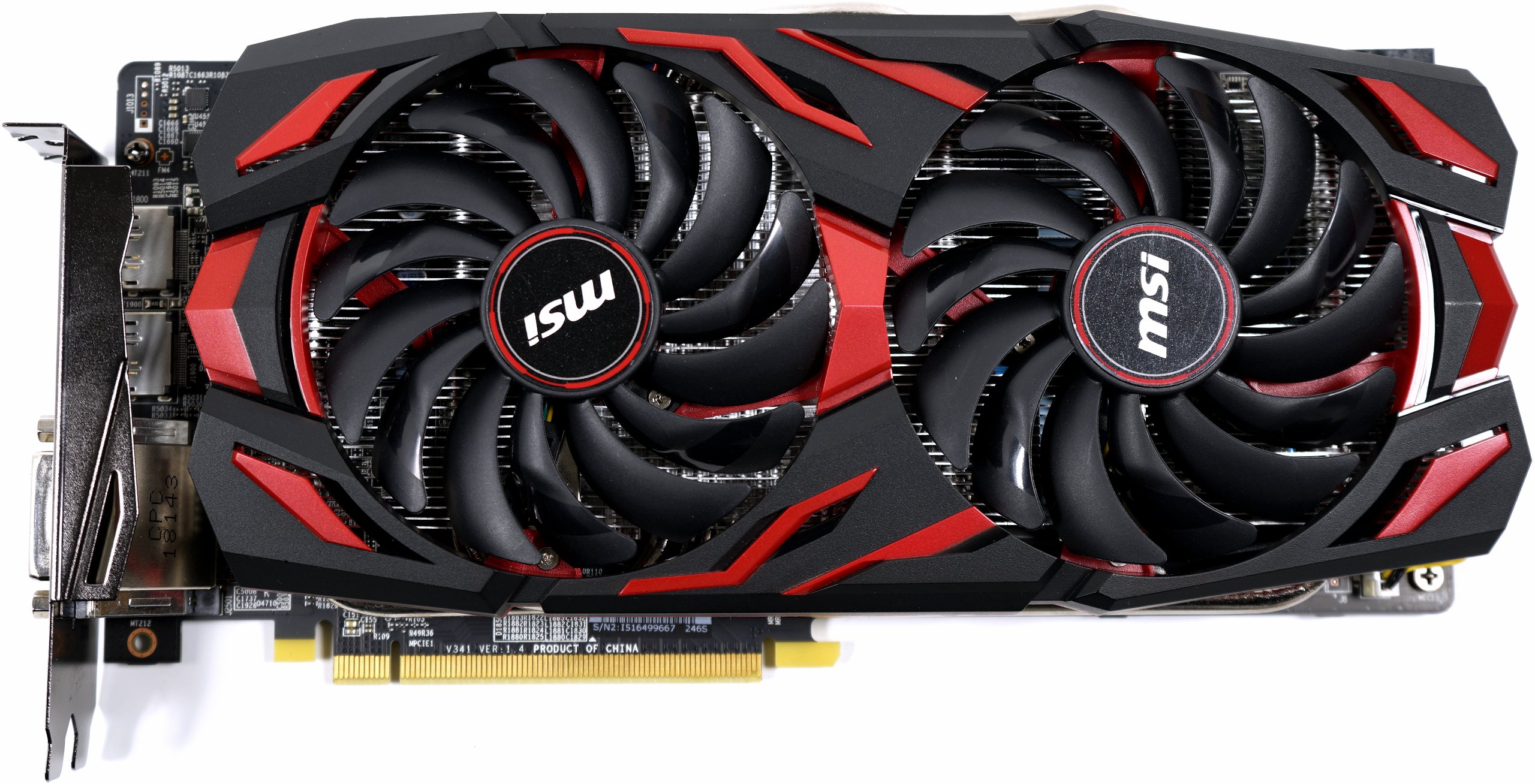
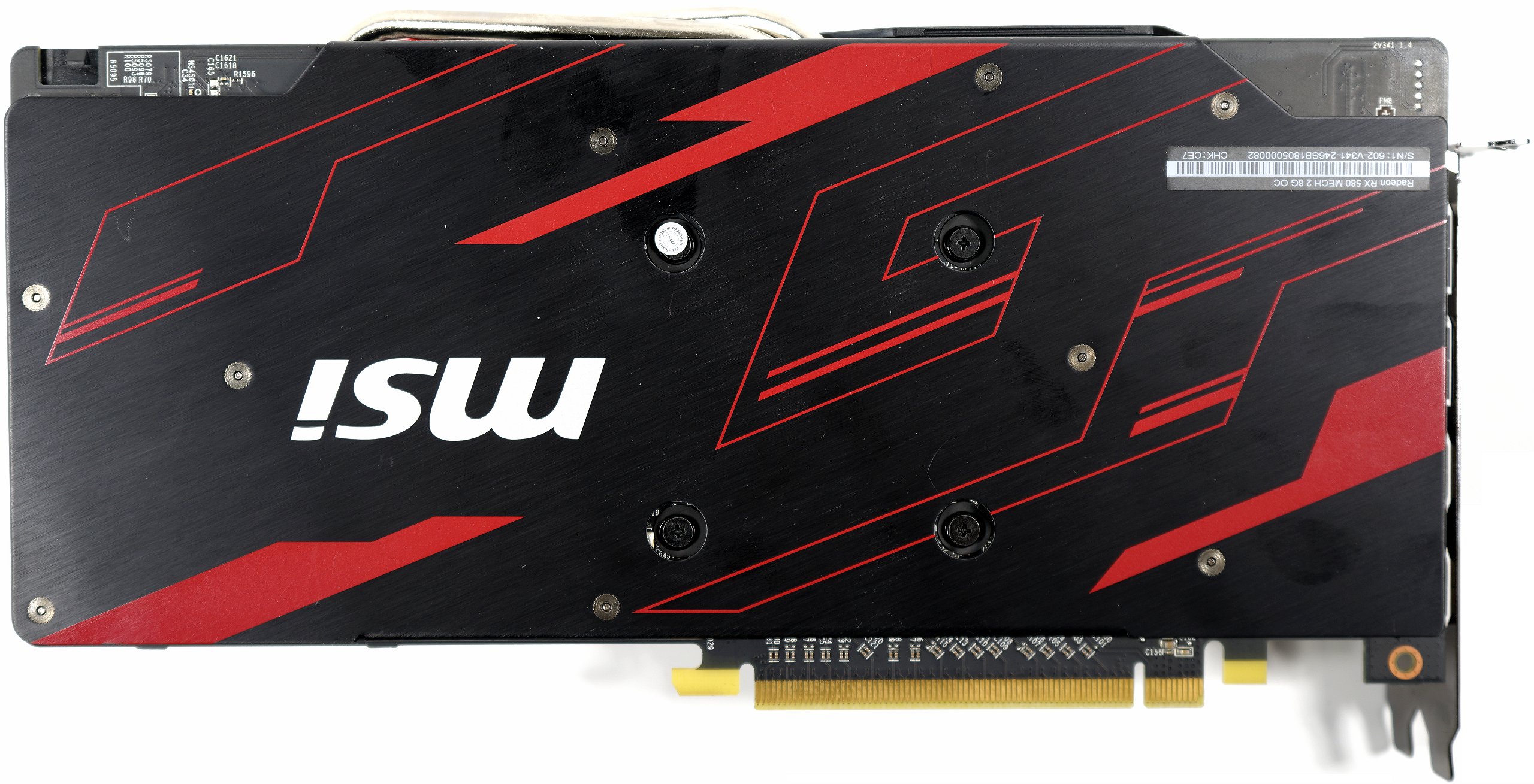


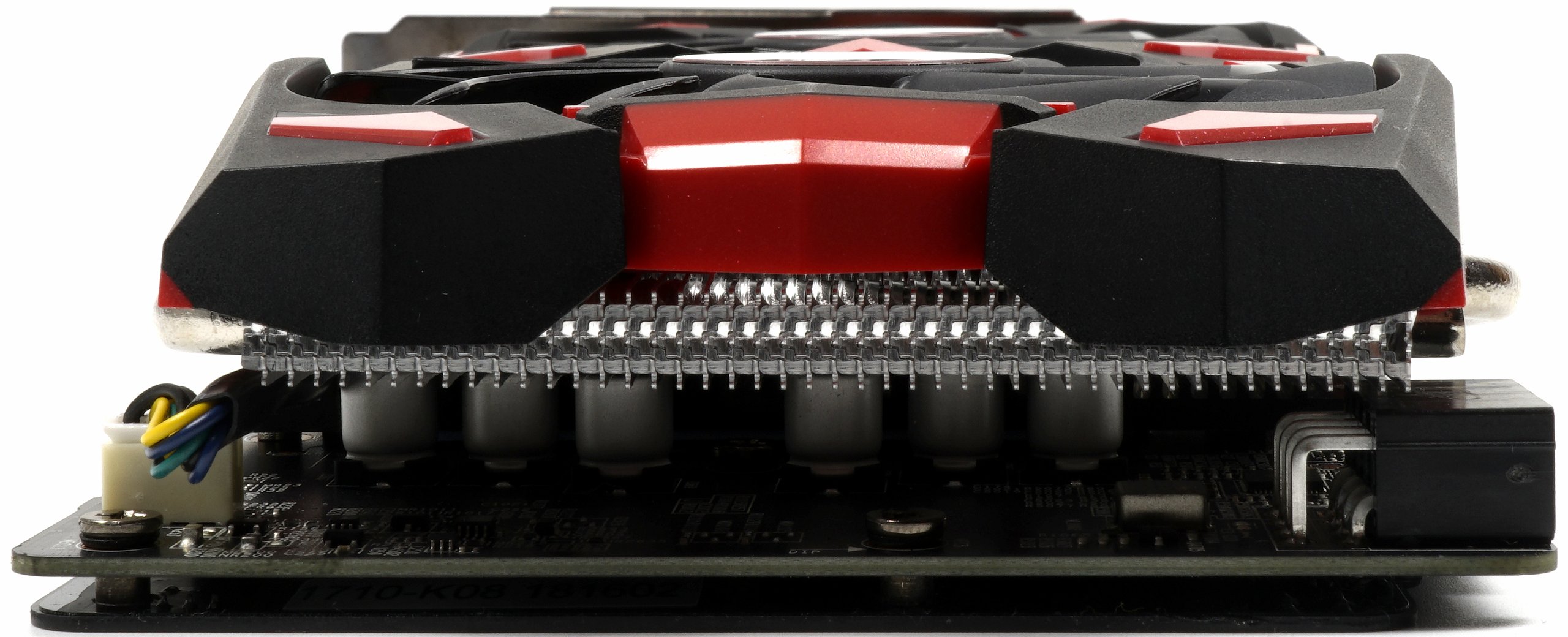



















Kommentieren